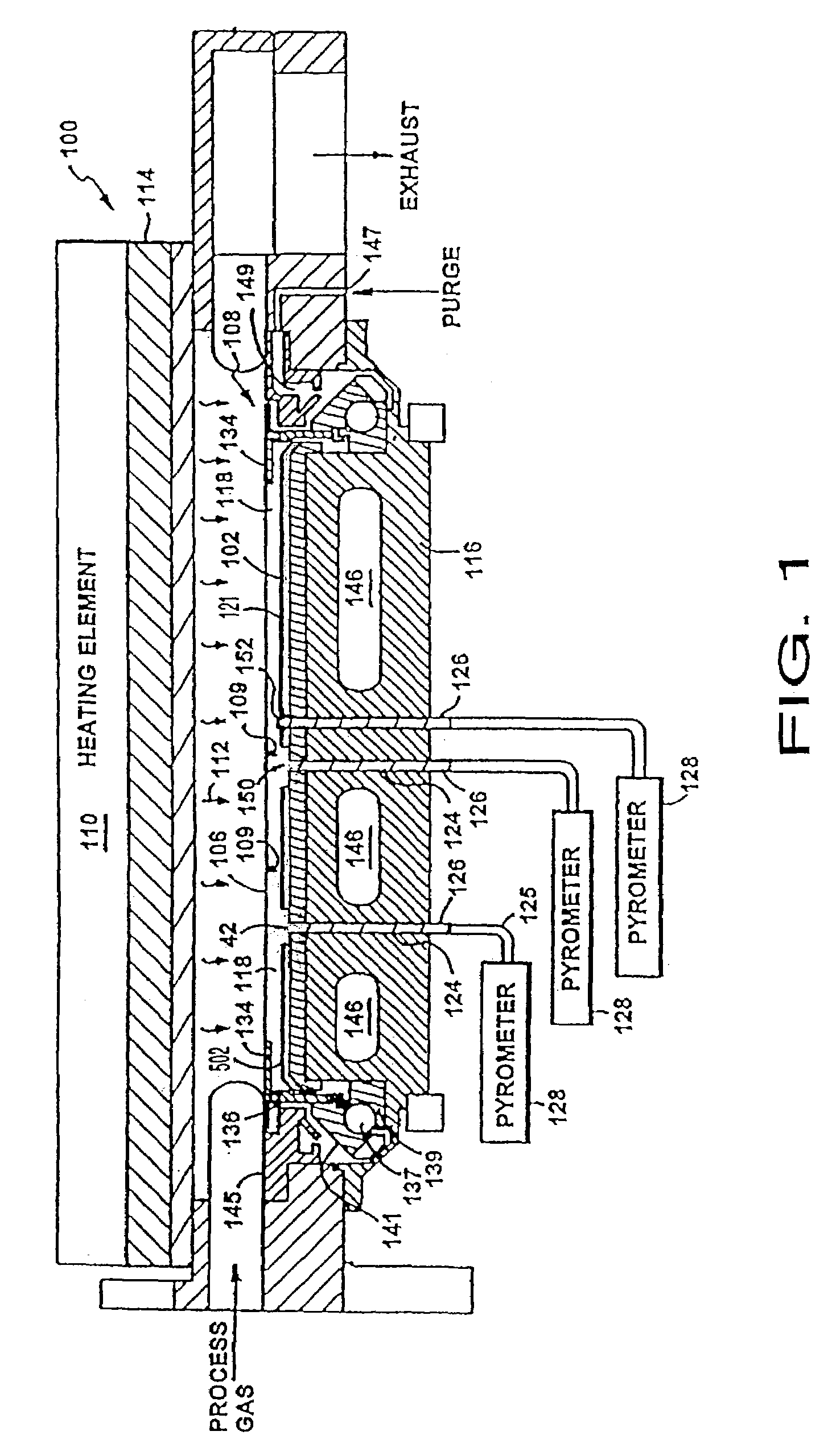Stepped reflector plate
a reflector plate and step technology, applied in the field of material thermal processing apparatus and methods, can solve the problems of difficult measurement, inability to measure, and inability to introduce unknown errors into temperature measurements, so as to improve the performance of the pyrometer, promote rapid cooling of the substrate, and reduce the effect of reflectivity
- Summary
- Abstract
- Description
- Claims
- Application Information
AI Technical Summary
Benefits of technology
Problems solved by technology
Method used
Image
Examples
Embodiment Construction
[0023]The present invention is generally directed to a stepped reflector plate for use in thermally processing a substrate. A reflector plate has a stepped surface facing the substrate during heating and cooling of the substrate. The raised surface of the reflector plate is non-reflective, providing advantages during, among other things, cooling of the substrate. The reflector plate also includes a number of recesses, in which one or more pyrometers are positioned. These recesses have a reflective surface, providing advantages in the performance of the pyrometers.
[0024]The RTP System
[0025]An RTP system in accordance with one embodiment of the present invention is shown in FIG. 1. The RTP system includes a processing chamber 100 for processing a substrate 106. In one embodiment of the present invention, the substrate 106 is a disk-shaped, eight inch (200 mm) diameter silicon substrate. In another, it is a twelve inch (300 mm) diameter silicon substrate. The substrate 106 is mounted i...
PUM
| Property | Measurement | Unit |
|---|---|---|
| reflectivity | aaaaa | aaaaa |
| reflectivity | aaaaa | aaaaa |
| diameter | aaaaa | aaaaa |
Abstract
Description
Claims
Application Information
 Login to View More
Login to View More - R&D
- Intellectual Property
- Life Sciences
- Materials
- Tech Scout
- Unparalleled Data Quality
- Higher Quality Content
- 60% Fewer Hallucinations
Browse by: Latest US Patents, China's latest patents, Technical Efficacy Thesaurus, Application Domain, Technology Topic, Popular Technical Reports.
© 2025 PatSnap. All rights reserved.Legal|Privacy policy|Modern Slavery Act Transparency Statement|Sitemap|About US| Contact US: help@patsnap.com



